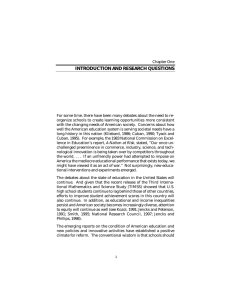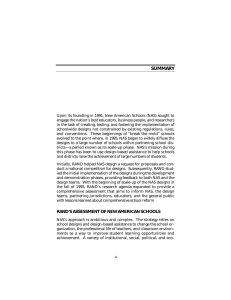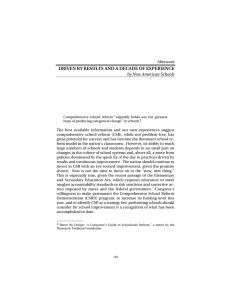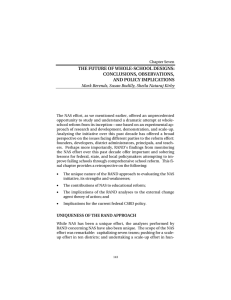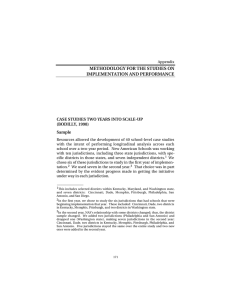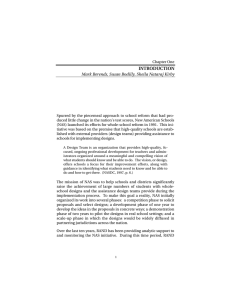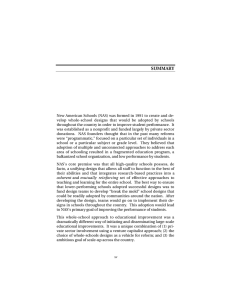OVERVIEW OF RAND EVALUATION FOR NEW AMERICAN SCHOOLS
advertisement
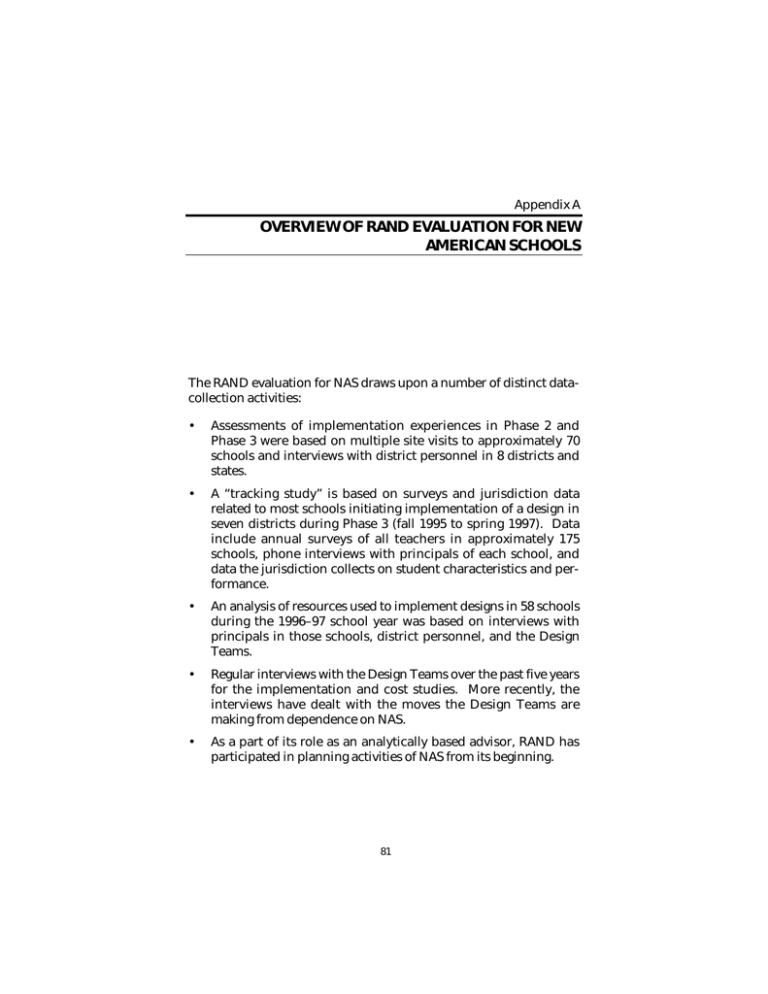
Appendix A OVERVIEW OF RAND EVALUATION FOR NEW AMERICAN SCHOOLS The RAND evaluation for NAS draws upon a number of distinct datacollection activities: • Assessments of implementation experiences in Phase 2 and Phase 3 were based on multiple site visits to approximately 70 schools and interviews with district personnel in 8 districts and states. • A “tracking study” is based on surveys and jurisdiction data related to most schools initiating implementation of a design in seven districts during Phase 3 (fall 1995 to spring 1997). Data include annual surveys of all teachers in approximately 175 schools, phone interviews with principals of each school, and data the jurisdiction collects on student characteristics and performance. • An analysis of resources used to implement designs in 58 schools during the 1996–97 school year was based on interviews with principals in those schools, district personnel, and the Design Teams. • Regular interviews with the Design Teams over the past five years for the implementation and cost studies. More recently, the interviews have dealt with the moves the Design Teams are making from dependence on NAS. • As a part of its role as an analytically based advisor, RAND has participated in planning activities of NAS from its beginning. 81 82 New American Schools After Six Years • Small, topical surveys have been conducted to investigate areas not covered by the larger research efforts (e.g., a phone and field survey to learn about the matching process in several jurisdictions). Over the next three years, RAND will continue to track performance outcomes in schools in seven jurisdictions that began to use the designs in 1995–96 or 1996–97. It will also continue to survey teachers and principals in these schools to learn the effects they perceive the initiative has had on their schools. Interviews with policymakers in jurisdiction will be continued to help us follow and understand the changes in jurisdiction operating environments that are occurring as the NAS initiative unfolds. A study of changes in classroom behaviors associated with the implementation of the designs will also be initiated in 1997–98 to complement the broad tracking study mentioned above. In 1998–99, RAND will initiate a new study of implementation using a number of school-level case studies.




